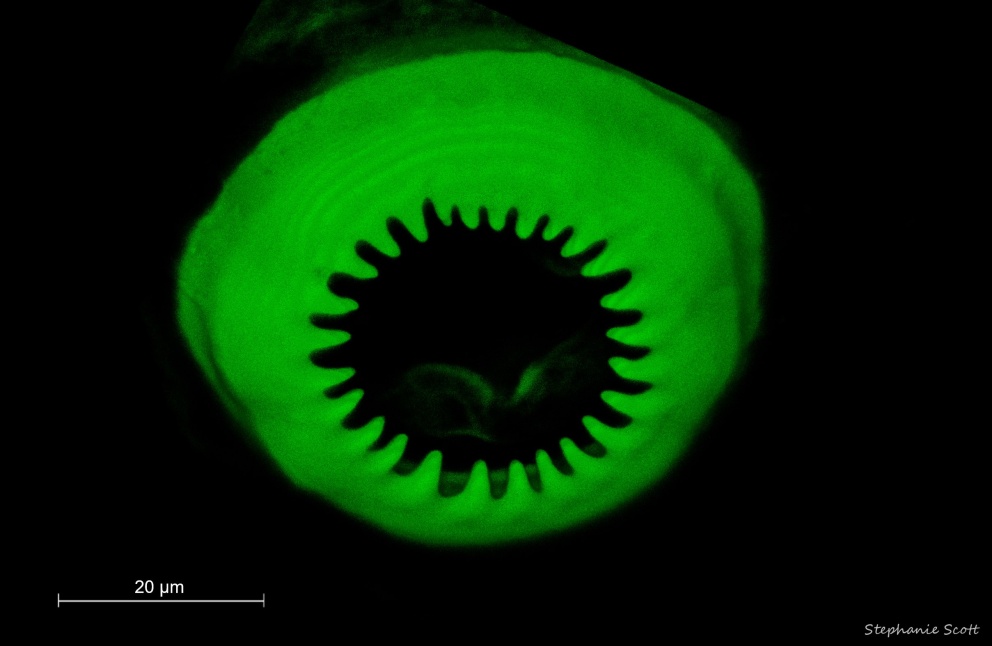Autofluorescence of the Swim Bladder parasite

Anguillicola crassus is an invasive ,blood feeding, swim bladder parasite (nematode) that infects the American eels (Anguilla rostrata) in the Wolastoq | Saint John River system. Parasite infections in the Wolastoq are currently over 90%, negatively impacting the eel population. Eels are currently listed as a threatened species (COSEWIC, 2012) in NB, and endangered in other regions (IUCN, 2019). The adults use these mouthparts to attach to blood vessels from inside of the eel swim bladder, causing swim bladder damage, infection, and anemic eels. All these negative impacts impede the eel from reaching its destination of reproduction. Thus, conservation and management on the species by diagnosing infection is of high importance. The newly discovered autofluorescence of the parasite mouthparts can potentially provide a non-lethal diagnostic method for Anguiillicola crassus infection to aid in conservation initiatives. This was part of my MSc research, were I looked at every life stage (L2,L3,L4) of the parasite and found the same fluorescence as shown by the adult parasite in the image.